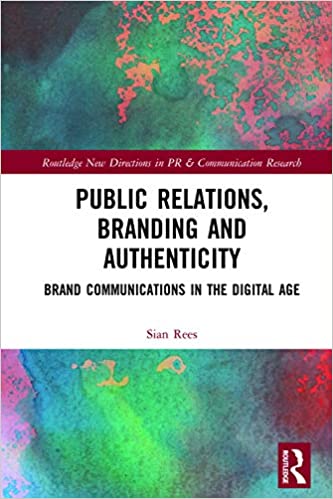PR Nashville
Pros and Cons Of Hiring an External PR Agency Versus In-house
Should you hire an external public relations (PR) agency or work with an in-house PR team to handle your public relations? This is the question many business owners need to answer before promoting their brand. As someone who has worked with an in-house team and is currently running a PR agency, I understand both sides of the in-house vs. external PR debate. Each choice has pros and cons. Let's get to the details.
In-house PR Team Pros
Having an in-house PR team as a critical member of your Marketing Department has some advantages over an external PR agency, including the following.
1. Better Brand Familiarity

An in-house PR team knows your brand inside and out since they are part of your organization. They have a deep knowledge of your brand messaging, business goals, customers, and competitors. Although a good external PR agency will learn about your brand, establishing this relationship can take some time.
2. Ease of Contact
Reaching out to any member of your in-house team will take less time than an agency. You’re probably in the same physical workspace, and even if you work remotely, they are available only to you since they are most likely full-time employees. For instance, you can have an impromptu conversation at someone's desk or set up a quick call without scheduling. With an agency, you'll likely communicate via email or phone and book a meeting.
3. Project Dedication
Reputable PR agencies work with many clients, so you might not get the level of attention you want from your campaign manager. However, some agencies like RPR Firm treat every customer like they're the only client they are working with.
In-house PR Team Cons
There are also downsides to hiring an in-house PR team, especially if you’re a startup or lack the financial resources to make this huge financial investment.
1. Need for Ongoing Talent Management

Having an in-house PR team means you must always find, hire, and train new team members. What’s more, hiring a team can be much more expensive than partnering with an agency because of the need for insurance, employee benefits, technology, and other perks. Also, the ever-changing public relations landscape requires many skill sets, like media outreach, content creation, reputation management, etc. You can even break down these smaller categories and specializations. This is why you can’t rely on one person to handle everything; it truly takes a team.
2. Investment in PR Tools & Technology
Whether in-house or an external PR agency, every public relations professional needs tools to communicate, connect with customers, and monitor their campaign progress. Some PR tools, such as Prowly, Meltwater, Muck Rack, Brandwatch, and others, are quite expensive. However, since a typical external PR agency has invested in these tools already, you don't have to shell out extra cash. Besides, having a tool is one thing; knowing how to use these tools to extract valuable insights is a different ball game entirely.
Pros of Hiring an External PR Agency
Hiring an external PR agency comes with many advantages, and we highlight some of them below.
1. Teamwork and Experience

Most external PR agencies have likely seen what works and what doesn't work for a brand like yours from working with different clients across multiple industries. A good external PR team will stay updated with industry trends and the latest technologies to maximize your campaign’s effectiveness. Moreover, an external PR agency will have professionals with different areas of expertise that can unlock unconventional PR opportunities of which you may not be aware. As a result, you can easily change your campaign direction or goals without spending months hiring or training someone.
2. Better Equipped with PR Tools
You need reliable PR tools to make informed decisions about your customers, competitors, and investors. Most premium tools are expensive, but external PR agencies typically use them on a larger scale for daily operations. Hiring an external PR team means you don’t have to incur unnecessary costs on software purchases.
3. Cost-Effective

Hiring, training, and keeping an in-house PR team requires time and money. Although the cost of partnering with an external PR agency depends on your needs, hiring an agency could save you a great deal. Also, many PR agencies offer a la carte services, so you’re not tied to a monthly retainer allowing even more flexibility and cost savings.
Cons of Hiring an External PR Agency
Partnering with an external PR agency comes with downsides as well, including the following.
1. Location
Unlike an in-house team, an external PR agency might not be in the same location as your business. Choosing meeting times can be challenging with different time zones or locations, leading to a lag in communication. However, a good agency has processes to make any time differences work.
2. Simultaneous Work with Multiple Clients
This can be a plus or a minus, depending on the agency. A reputable PR agency will make you feel like you're their only client. Unfortunately, not every agency prioritizes maintaining an outstanding client relationship as we do at RPR Firm. If you're currently working with an agency that doesn’t prioritize your business, it might be time to find a new one.
3. Less Control
External PR agencies tend to work best with some level of freedom, but that doesn’t mean you won't have any input on your PR campaign strategies. However, you need to trust the agency to use its best PR tactics for your campaign. Although, you'll usually be required to approve strategies and other campaign decisions. However, your partnership with a PR agency gives them some liberty to make choices for your business from research and conversations with you and your customers.
If you want complete control over your PR campaign, an in-house team might work better for you, but a responsible external PR agency won't just make decisions and leave you in the dark. They'll have thorough reporting processes to keep you informed and keep themselves accountable. Some agencies might even have their own data reporting platforms with real-time data for their clients.
Should You Hire In-house vs. an External PR Agency?
At the end of the day, the decision to hire an in-house or an external PR agency is dependent on your specific business needs. What works for one brand may not work for the other. A good compromise may be to complement your in-house team effort by collaborating with an experienced external agency.
How To Spread Enthusiasm With PR In An Age Of Crises
In a world filled with global challenges—from hurricanes to war, mass layoffs to economic recession, it’s easy to fall into fear and pessimism. So how do you spread enthusiasm with PR in times of crisis without doing more harm to your brand than good? In this article, we explore different tips that can help.
Tips for Spreading Enthusiasm with PR
It’s easy to be overwhelmed by negative occurrences around us, and it takes a smart brand to spread positivity amid challenges. Here are four tips to spread enthusiasm during crises:
1. Be Attentive to Your Customers

The best strategy is to talk less and listen more during crises. You can gather information about how the problem affects your target audience, possible solutions, and how you can help. Start conversations with your target audience about the effect of the crisis on their daily life via your social media. Also, monitor platforms like blogs, social media pages, forums, and others that talk about the impact of the situations and identify critical issues your brand can solve. Remember, people just want to feel heard, seen, and understood; genuine listening goes a long way.
2. Showcase Resilience through Storytelling
In times of crisis, people want positivity, inspiration, and affirmation that they can overcome any obstacle. They also want to feel understood, and the best way to connect with them is by showing your customers that you understand their pain. Creating a PR campaign highlighting stories of how your brand, an employee, or a client remained resilient in times of crisis and turned things around sets the stage for a conversation. Moreover, it inspires your customers to stay positive, triggering a ripple effect that can spread to larger circles. In turn, you might ask your customers to share their stories. This promotes user-generated content that helps build brand awareness as well.
3. Encourage the Feeling of Togetherness
The most effective PR tactics leverage genuine human connection. Spreading enthusiasm with PR works if customers feel understood and know you stand with them. Identify a critical issue in your local area that affects customers.
Once you have that figured out, you can create campaigns that trigger conversation around "this is the problem, how it affects us, and what we can do to fix it." From this, you can quickly get people to support whatever relief drive you initiate. It's easier to spread enthusiasm when your target audience is on board. People want to support a cause that helps relieve the stress of a crisis, and generating awareness and response is more seamless when we all work together.
4. Create Campaigns Around Brand Values to Show Positivity in the World

Beyond creating PR activities that showcase togetherness and help you listen or drive resilience, your campaign must align with your brand values. Every PR campaign must connect back to what your brand stands for and not just for the traffic or me too PR stunt. Initiating relief campaigns, online and print media content, or any other PR crisis strategy must showcase your brand values.
Infusing your brand values helps consumers connect with you faster and build loyalty. It lets you show that you aren't an "on paper" brand; you match your values with action. In a world riddled with deceit and crises, upholding your brand values helps to spread optimism and enthusiasm for a better future.
Examples of Powerful PR Campaigns that Spread Enthusiasm During Crisis
Many brands have supported consumers and/or upheld their brand values in times of crisis. If you plan to spread enthusiasm with PR, here’s some inspiration for your next campaign.
1. Airbnb for Ukraine
To support victims of the Ukraine invasion, Airbnb started a campaign that offered short-term housing to refugees. This campaign triggered enormous support with individuals booking Airbnb and canceling at the last minute without requesting a refund. This method serves as a donation drive to provide shelter for refugees.
2. Apple, “Creativity Goes On” Campaign

In the heart of the 2020 Covid-19 pandemic, Apple created a PR campaign called "Creativity Goes On" to remind us to remain hopeful. The campaign inspired joy during the lockdown with Apple sharing tools and tips consumers need to stay connected with family. It also showcased creative projects and an educational learning series to help people who may be overwhelmed by the pandemic. The campaign was effective because it created a feeling of being heard and provided solutions to help consumers navigate the trying time.
3. Tescos #EveryLittleHelps
During the lockdown in 2020, many public businesses had to shut down completely, especially in the hospitality industry. So when bars, pubs, and restaurants began opening in mid-April, Tesco did something remarkable. They created a campaign that urged customers to shop from their local pubs instead of Tesco. This campaign showed Tesco's commitment to local communities, thus showcasing its brand values.
Partner with a Professional PR Agency
There will always be crises, but we can amplify the positive instead of the negative. Using PR, companies can create positive messages that build consumer connection and loyalty and showcase brand values. When implemented strategically, you will establish your brand as a reputable entity that listens, understands, and takes action to support its customers at every turn. At RPR, we help brands create effective public relations strategies that boost brand awareness and revenue growth and spread enthusiasm. Book a free consultation to explore our public relations services today.
Benefits of Having a Social Impact Strategy in PR
In today's business landscape, building solid relationships with customers, partners, investors, and other stakeholders is crucial for success. A social impact strategy can help your company achieve this by nurturing relationships with your community and other businesses. In this article, we discuss seven benefits of social impact strategy on your company’s public relations (PR) campaign.
What is a Social Impact Strategy?
Social impact is a focus in business that involves taking on socially responsible activities to serve communities and impact the world. Companies that prioritize social impact do so by contributing to solving a local or global challenge. This could be standing for a cause or addressing pressing needs like environmental issues, gender issues, educational gaps, refugee rights, social justice, etc.
While many brands understand the importance of social impact on business, it’s also critical to learn how to communicate their steps and efforts to improve the world. When perfectly executed, a social impact strategy can benefit your business in a number of ways.
7 Benefits of Social Impact Strategy in PR

PR is primarily about improving your appeal to the public, and demonstrating a positive social impact can help you do that. Here are seven ways your PR strategy can benefit from a robust social impact strategy.
1. Helps Customers Identify With Your Values
Business isn’t just about what you sell but also what you stand for. A 2019 survey showed that 77% of customers love brands that share their values and make efforts to champion them. Thus, a social impact strategy benefits PR because it helps customers identify with your company’s mission. One company that uses a social impact strategy effectively for its PR is Nike. The sports company is known for supporting social causes and showcasing athletes and cultures globally. The brand prioritizes consumers in its storytelling, utilizing Instagram for inspirational images and videos, Facebook for larger campaigns, and Twitter for addressing concerns. Nike's campaigns encouraged social distancing during the pandemic, supported the BLM movement, and empowered girls to pursue their dreams. Their campaigns inspire people to have courage and strive for greatness.
2. Builds Customers’ Trust

Consumers are more skeptical than ever when it comes to marketing ploys from brands trying to earn their business. However, they do tend to be more likely to put their trust in companies that align with their own values. Your social impact strategy allows you to ‘put your money where your mouth is,’ so to speak, through PR published in the media showing the good your company has done. This is earned media, not paid advertising, and is much more credible to consumers, which makes it easier to earn their trust and loyalty.
3. Harnesses the Power of Your Positive Influence
Knowing how your company inspires change in the world can help you fine-tune your branding messages. PR is not only about knowing what to say to the public but also how and when to say it. Your social impact strategy is the means by which you determine this as it’s your plan to affect change—the who, what, when, where, how, and why. With these things identified, it’s much easier to craft effective PR.
4. Attracts Investment Opportunities

Showcasing your company’s efforts to improve the world will help get investors’ attention. The positive recognition will also encourage them to invest in your company and feel confident doing so.
5. Helps Retain the Best Talent
Employees are the backbone of every successful company, and just like consumers, they are more attracted to companies that share their values. A company that enacts change will likely attract top employees who share its values and vision. Having employees that support your social impact will improve their commitment and productivity within your organization.
6. Increases Revenue
While PR is more of a top-of-the-funnel activity than marketing, its ultimate goal is to attract potential customers. However, being able to publicize your social impact means customers who align with your values will be more willing to buy from you.
7. Brand Reputation
One of the primary advantages of being a socially conscious company is that it increases your brand awareness and improves your reputation. Social impact is about helping others and contributing to a better world, so this should be the core of your strategy. If your company cares about making a social impact, you can create a meaningful change that improves other people’s lives. Eventually, creating a visible change will enhance your media recognition and make people see you positively.
Hire a PR Expert

Brands need to cultivate a strong relationship between their social impact strategy and PR strategy, but you’ll require a unique skill set to do this well. It would help if you had PR professionals who could effectively communicate your social impact strategies in a newsworthy way rather than a sales pitch.
At RPR Firm, we have a team of PR professionals with the skills and experience to help you benefit from your social impact by communicating the work you’re doing. Our company has more than 11 years of experience helping brands further their mission to make a change. Schedule a free consultation with us today.
What to Consider if You Are Thinking of Starting a New Business: A PR Agency Perspective
Did you know that 30.6% of businesses fail in the first two years, 49.7% fail after five years, and only 65.5% stay active for up to 10 years? Investopedia identified poor internet presence and marketing as the top reasons for this failure. As a prospective business owner, investing in a solid promotional mix strategy that involves PR campaigns will help you gain public attention, build brand awareness and communicate product relevance effectively. However, consider a few things before setting up your business or investing in a PR campaign. These include target audience, messaging, when to start, strategies to implement, hiring in-house or agency PR services, and tools for successful PR campaigns. Being a professional PR agency, this article will answer these questions to help you get the best results.
Your Target Audience
The target audience is the first building block for a business considering PR strategy in its marketing mix. Every product or service is designed to solve a problem for a specific demographic, and knowing your target audience guides that direction regarding messaging. As such, effective PR for a new business relies heavily on clearly defined target audience personas.
You should understand your target audience like you do a friend. Important information includes what they like, what content distribution channel they frequent, what relevant topics they interact with, and other demographic details. For example, if you have demographics that skew older in your target audience, newspaper, and TV PR campaigns might be more effective than social media platforms like TikTok or online news publications. Note that the who will guide the what, when, and how for a practical PR approach.

Your Messaging and Positioning
In PR, positioning, and messaging refer to how you describe your unique value. Humans are complex beings, and every business niche has at least one or two competitors. If you want to start a business that gets attention online, becomes the talk of the town, and appeals to customers' inner desires, then your messaging and positioning must be ironclad. You must consider all factors, including the customer's voice, prohibited phrases, how they want to be addressed, your brand tone, and, most importantly, your brand story. You will build lasting relationships or a loyal customer base with a story that emphasizes what the target audience wants, their inner desire, pain, and aspirations.
When to Start Running PR Campaigns
The question about when to run your first campaign has no specific answers. Why? Public relations is a tool for creating attention for your products, services, etc., and different businesses have varying business goals. However, as a new business, it's best to start running a campaign just before or immediately after you launch. You want to introduce your business to the market early, so your customers can follow your journey and develop an emotional connection to the brand.
Your PR Strategy

A PR strategy defines the method you adopt to launch a successful campaign. A well-defined strategy is highly organized and highlights all campaign elements. As a new business owner, some of the tactics that make up your PR strategy may include the following:
- Press releases to build brand awareness and generate backlinks.
- Interviews with local TV stations and media outlets to trigger brand conversation and visibility.
- Engage in community and industry events as speakers, panelists, or participants to build PR relationships with important stakeholders and promote products.
- Social media to create buzz and improve brand awareness and customer engagement.
- Partner with influencers to boost brand trust rating and drive sales.
- Publicity stunts to generate attention and get the conversation going about your upcoming product launch.
In-house Versus PR Agency
Hiring professionals matters when starting a new business that integrates PR strategy into your promotional mix. There are a few things to consider regarding in-house versus PR agencies, like budget, expertise, and goals.

A PR agency is usually less capital-intensive than an in-house PR person or team. Besides the cost, hiring an agency offers better results for new businesses as they have more experience in the industry and established relationships with media personnel. While in-house PR might take time to test different approaches, an agency can implement the best tactics immediately and get good results.
PR Management and Measurement Tools
Whether you create your PR campaign in-house or hire a PR agency, it's best to have real-time tools to track campaign performance. Here's a list of the best PR tools to consider.
- Muck Rack
- Anewstip
- HARO
- Brand24
- Google Alerts
- Brandwatch
Getting Started with PR for a New Business
Starting a business that integrates PR strategy into the promotional marketing mix without considering key factors is risky. You must arm yourself with information about significant PR elements, ready to hit the ground running from day one. Consider factors like target audience, brand messaging, positioning, when to start, and the best strategies and tools. Once you have these covered, you are one step closer to creating an effective PR campaign that creates buzz for your business and drives profitable actions. Need help with getting started? Schedule a call with our professional PR team to see how we can help your new business or product with strategic PR activities.
What Can PR Do for Your Business?
What Can PR Do for Your Business?
Public relations is a promotional strategy that uses quality content and other tactics to manage the public perception of your business. At its core, it aims to build brand awareness, reputation, and customer trust, establishing your business as an authority in your industry. In this article, we explain the benefits of PR to your company and the mistakes to avoid when launching your first PR campaign.
What are the Benefits of PR for Business?
PR is a cost-effective promotional strategy that offers unlimited results. An effective public relations campaign can generate many backlinks, and website visits, improve ranking in search engine results, position your business as a reputable partner, and boost sales. However, if you are planning your first digital PR campaign, here's a list of benefits you can derive from public relations in your promotional mix.
Build Brand Awareness and Credibility
As the name implies, PR focuses on content or tactics that help you connect with the public and your target audience. Daily, the competition for customers' attention is getting more challenging, with more brands entering the marketplace. It's crucial to establish a brand connection that helps you stand out. Activities like brand storytelling that detail the emotional why behind your business drive and goals are great touchpoints to implement.
With this approach, your target audience can understand and relate emotionally to your business which helps with audience relationship and trust building. When this content gets picked up by reputable publications, whether naturally or through paid media coverage, it helps to establish your business credibility. Customers naturally look up to influencers, experts, or reputable news outlets for verifiable and credible information which serves your business and builds your reputation.
Establish the Brand as a Topical Authority
There’s much more to PR than press releases. While that might be the first option that comes to mind, other activities like guest blogging and thought leadership builds on the traffic a press release creates. However, by publishing expert insights, data, reports, maps, surveys, and blogs on specific niche topics, you gain more visibility for your business. Subsequently, consistently showing up as a reliable source for expert, fresh, and valuable information will get your business noticed, establishing it as a go-to topical authority. This will also help improve your domain ratings and generate quality backlinks from other reputable sites.
Improve Business SEO Performance

At its core; public relations aims to introduce your business to the public and trigger some conversation around your product or the business. When you deploy a PR campaign, the benefits exceed brand awareness.
Generally, brand awareness means more visibility, leading to more website visits, generating backlinks, community engagement, and authority building. These factors contribute to search engine optimization (SEO) efforts and help increase your ranking. Furthermore, when you get PR backlinks from reputable sites, they pass authority to you, boosting the website's domain rating. Subsequently, Google will use these parameters to measure your website relevance in search engine results pages (SERPs) and assign a rating that boosts general SEO performance.
Boost Customer Acquisition and Sales

Trust and visibility are essential elements of the sales process. If your business is visible to the right audience but has poor reputation management, it will result in a low trust rating. Furthermore, the target audience wants to associate with a reputable institution, and public relations help to manage the business perception in the public eye. Investing in an effective public relations campaign in-house or outsourcing to a PR service agency will boost your customer acquisition and sales.
Attract New Investors and Partners

A CB Insights report revealed that 38% of startup founders identified the inability to raise new capital as a source of failure. However, accessing funding is essential to keep the business running, but this can be difficult if you have no brand visibility or have not built a good business profile. You can get media coverage for your business solutions through PR activities. Like press releases, whether it's revolutionary technology or a simple lifestyle brand. This serves as a sales pitch to invite investors to join your business. Furthermore, it also helps you manage your online business reputation, which is vital to investors and partners in terms of your brand credibility.
6 Mistakes to Avoid in Implementing PR for Small Businesses

As a business owner, implementing a PR strategy offers unlimited opportunities for growth and audience building. However, many companies want fast and easy results. This leads to mistakes that cost them money and time, hurting the business growth. Here's a list of six mistakes to avoid.
- Implementing PR for business without a well-defined strategy.
- Failing to identify your target audience.
- Setting unrealistic campaign goals, KPIs, and targets.
- Creating complex communication materials that don't deliver value or clearly show the business's unique offer.
- Creating campaigns that don't align with your brand's expertise and topical focus.
- Relying solely on seasonal hooks to get public attention.
Getting Started with PR for Small Businesses
Public relations is as important to business today as it was in the traditional marketing era. However, with the rapid growth of digital communications outlets and media, there's an unlimited approach shared between traditional PR and digital PR strategy you can implement. Although launching your brand PR campaign can be daunting. You can achieve the best results with the right tools and team. At RPR, we help businesses generate tangible results that support business goals with expert-led public relations services. Schedule a call to learn more about how we can grow your business.
10 Must-Read PR Books for Every Business Professional
Diving into the deep end can be scary when you are new to the world of public relations. Also, staying up-to-date as things change and evolve is essential to achieve your goals. Reading some books about PR increases your chances of having better strategic planning for public relations. Some books reveal the fundamentals and evolving tactics of PR. If you want to discover what the industry entails, consider the following ten must-read books on public relations.
Books About PR You Need to Read
Here are our top ten PR books for business owners.
1. “Spin Sucks: Communication and Reputation Management in the Digital Age” by Gini Dietrich

Gini Dietrich is a rockstar in public relations, thanks to her popular blog and cutting-edge insights. And lucky for you, she's compiled all of her expertise into one must-read book! In "Spin Sucks," she goes beyond just communication tips to provide a comprehensive guide to reputation management in the digital age. This book provides insights into the latest tools and techniques for managing your organization's online reputation, including how to deal with negative reviews and social media crises. One of the most valuable lessons from the book is the importance of transparency and authenticity in building trust with your audience. Dietrich emphasizes the power of communicating openly and honestly, helping you establish your organization as a trustworthy and credible source of information.
2. “The New Rules of Marketing and PR” by David Meerman Scott

In this book, David Meerman verifies the importance of digital and web-based marketing for PR. Through online connections, organizations can reach their target audience. The book will teach you how to build long-lasting relationships with customers and clients.
3. “The PR Practitioner’s Playbook” by Don Bartholomew

The author shares theories that are woven into numerous proven techniques, tips, tactics, tools, and strategies that will help inexperienced and experienced PR industry practitioners. Bartholomew’s insight is helpful for all public relations professionals in advertising, marketing, social media, and other areas of digital media, strategic planning, and campaigns.
4. “This Is How You Pitch: How to Kiss Ass in Your First Year of PR” by Ed Zitron

This book will teach you all you need to know about public relations. You get to learn about the essential business skill of pitching. Drawing from his experiences in the industry, Zitron delivers practical advice on crafting compelling pitches that will catch the attention of journalists and influencers. The author also dives deep into the culture and expectations of the industry, sharing insights on handling demanding clients and navigating challenging situations with ease. From crafting a compelling story to understanding the needs and preferences of your audience, "This Is How You Pitch" covers everything you need to know to succeed in public relations.
5. “Public Relations, Branding, and Authenticity: Brand Communications in the Digital Age” by Sian Rees

The author explores the importance of authentic communications in your PR and branding role with case studies on the public relations activity of successful brands and interviews with those in crises. “Public Relations, Branding, and Authenticity” is aimed at public relations academicians and practitioners interested in theory development and is also helpful for scholars in corporate communications and brands.
6. “A Modern Guide to Public Relations: Unveiling the Mystery of PR Including Content Marketing, SEO, Social Media & PR Best Practices” by Amy Rosenberg

Do you need help getting started in PR? The book contains everything you need to know about launching a PR career or adding a new skill. Learn how to create a good work relationship with bloggers, podcasts, influencers, and traditional media. “A Modern Guide to Public Relations” covers new approaches to PR, such as SEO, content, and social PR as well.
7. “Public Relations Campaigns: An Integrated Approach Second Edition” by Regina M. Luttrell

Get hands-on instruction on how to create successful and integrated PR campaigns in this book. Two models are discussed: ROSTIR (Research/diagnosis, objectives, strategy, tactics, implementation, and reporting/evaluation) and PESO (paid, earned shared/social, and owned media). You’ll learn the framework for effective planning and using all available resources to create winning PR campaigns.
8. “Strategic Planning for Public Relations” by Ronald D. Smith

The author helps you develop a PR plan by identifying objectives and strategies brands can use to promote a brand. As well as how to manage bad publicity. The book also talks about the different ways you can communicate with media channels. Such as Ethos (character), Pathos (emotions), and logos (logic).
9. “Trust Me; I’m Lying: Confessions of a Media Manipulator” by Ryan Holiday

This book is sarcastic, witty, fun, and informative. It exposes you to the media industry and conglomerates that hold power. It’s an excellent resource to help improve your PR career. Also, you get to peek behind the curtains and learn from the tactics and mistakes made in the sector. Through his experiences as a media manipulator, Holiday reveals the tactics used by those in power to control the narrative and generate clicks and traffic. He shows how easy it is to manipulate the media and how this can significantly impact public opinion. One of the key takeaways from the book is the importance of transparency and authenticity in your communications. By being honest and open with your audience, you can build trust and credibility. Thus, it can help mitigate the impact of any negative publicity.
10. “Crisis Communications: The Definitive Guide to Managing the Message" by Steven Fink

This comprehensive guide to managing communications during a crisis includes strategies for preparing for potential crises, managing the flow of information, and addressing stakeholder concerns. You'll learn about the different types of crises, how to tailor your response accordingly. As well as how to work with the media and other stakeholders to manage the narrative. The book is filled with real-world examples of businesses that have faced crises and how they managed their communications, so you can see what works and what doesn't.
Which PR Books Are Best for Me?
Finding the best PR books to guide you through the rapidly changing industry can be overwhelming. Even though we have not exhausted the number of books, the ones listed in this article will help you explore key aspects of the industry.
Need more guidance on PR and how to use it effectively? Schedule a free consultation. We are here for you.
Top 6 Unconventional PR Opportunities and How To Use Them
If you're a business owner, you have likely come across the adage, "no publicity is bad publicity." While the veracity of this statement is debatable, an opportunity to create a buzz around your business and brand is an ongoing effort. Many brands already know how impactful standard PR outreach can be in building brand awareness and establishing credibility, but only a few know how to leverage unorthodox PR tactics. In this post, we explore six top PR opportunities for business owners and how you can use them to build brand awareness.
Top 6 PR Opportunities Business Owners Often Miss Out On
Here are the top six PR opportunities business owners usually miss out on.
1. Guerrilla Marketing
Guerrilla marketing generates publicity. It drives brand awareness using unconventional marketing tactics that grab public attention using creative means such as street art, pop-up installations, or flash mobs. Guerrilla marketing creates shock, curiosity, or surprise, and as a brand, you can leverage this to create awareness for your brand. Spotify and Bounty are examples of brands that use guerrilla marketing as a PR opportunity.

In January 2019, Spotify partnered with Chani Nicholas, a U.S. astrologer, to create a Cosmic Playlist for its listener. Bounty's installation of life-sized "messes," such as melting popsicles and knocked-over coffee cups across New York, generated more attention than having the same message on billboards.
2. Experiential Marketing
You can tell the public about your product, but a better way to create awareness is to show them instead. Allowing prospective and existing customers to experience your product first-hand creates an immersive and engaging experience. If executed well, many will be extra motivated to share the experience with their friends, family, and social media followers. However, you must be creative with your approach, conduct thorough planning, and execute it seamlessly, as experiential marketing for PR opportunities can be resource intensive. For experiential marketing to be a successful PR tactic, you must portray your audience as the characters in the story of your brand experience.

For instance, with the "The Queen's Ball: A Bridgerton Experience," Netflix commemorated the second season of Shonda Rhimes' popular TV series by launching theatrical pop-up events in various cities. Branded as "an exclusive night of music and dance," the event invited fans to dress up in 19th-century costumes, revel in a string quartet's rendition of contemporary music, and even get an audience with a queen seated on a plush sofa.
3. Employee Advocacy
If you have a positive relationship with your employees, they can serve as a natural voice for your brand. Many employees have massive following across various social media, and they can help build relationships with your current customers and reach prospective ones to drive organic visibility. Employee advocacy and PR are more intertwined today than before. According to Hootsuite, as a business owner, you can expand your organic reach by 200% and elevate profitability by 23% with a formal employee advocacy program. Unfortunately, many employers miss out on this PR opportunity because they feel they're controlling their staff by telling them to advocate for their brands. However, that is not true. If well motivated, your employees can be key in reaping PR benefits.
4. Cause-Related Marketing

Everybody likes to align with a cause, and finding one that puts your brand in the good book of the public is a smart PR opportunity many organizations underutilize. Whatever brand story you tell must evoke strong emotions that drive your target customers' engagement. An example of a company leveraging cause marketing as a PR opportunity is BoxLunch. For every $10 their customers spend, the company donates a meal to the needy through the Feeding America initiative. Knowing they are part of a cause they believe in can endear your brand more to your customers.
5. Podcast Appearance

Appearing on podcasts is one of the most underutilized PR opportunities. There are many popular podcasts out there in need of speakers. You can reach out to podcast show hosts and let them know your interest and availability. While you may not be attending the show to promote your brand directly. Your eloquence, credibility, and mode of delivery can attract listeners to look you and your brand up. Additionally, you can request the host to include your brand details in the podcast description, to drive visibility. However, you must conduct comprehensive customer research to identify which podcasts your target audiences enjoy.
6. Thought Leadership
Have you ever changed your opinion about a particular brand after reading its thought leadership content? Usually, branding is all about perception, and public opinion of you can affect customer decisions. A B2B Thought Leadership Impact report showed 65% of respondents agreed that a piece of thought leadership massively influenced their perception of a company for the better. In addition, 64% said thought leadership is a more reliable means of assessing a vendor’s competencies and capabilities than marketing materials and product sheets. While thought leadership content is not new, especially in B2B marketing, only a few brands leverage it as a PR opportunity. You can share your knowledge, expertise, and perspectives (often controversial) to build credibility and establish brand authority.
How To Get Started With Unconventional PR Opportunities
It often takes thinking outside the box to deliver an effective PR campaign. If you’re struggling to decide the best PR opportunities for your brand or unsure how to execute your PR campaign to generate the right result, know that we are always here to help. Contact us to schedule a free discovery call.
6 Proven PR Tips for Effective Public Relations Management
Public relations (PR) can be a tricky road to navigate. You are trying to put the word out in the market for your company, product, or service but also want to ensure you’re presenting your brand in the best light. Fortunately, by following these six PR tips we have curated, you can avoid making costly PR mistakes and instead build relationships and connections that will help your brand grow.
1. Create an Effective Strategy

To drive a successful public relations campaign, the first thing to put on the table is a rock-solid strategy. You can't manage public relations without this being well-defined. Your strategy should include a list of key messages, objectives, goals, and approaches based on the following.
- Know Your Audience: Not understanding who you serve and engage with can impede success. It is important to know who you want to reach out to, how you want to reach them, and why they should care about your business. The more specific your strategy is the better your chance of succeeding at PR.
- Know Your Approach: It is essential to be able to connect with your audience in a way that makes sense to them and in a manner that they find engaging. Furthermore, there are different approaches to different situations. For example, sending out a press release may work well when announcing an upcoming product launch. However, an interview request from the media could be more effective if it illustrates how the company is expanding its staff and resources.
- Develop a Crisis Management Strategy: A crisis management plan will help you avoid potential disasters before they happen. Furthermore, it will ensure you're prepared should situations go awry. You'll want to include an exhaustive directory containing contacts from all your agencies, a list of employees representing the company, and sample message responses to different situations. It’s all part of a well-defined public relations strategy. Learn more about PR for crisis management.
2. Cultivate Positive Relationships with the Media/Press

The media/press is a vehicle for all things news in our society; they can make and break any individual or organization, so you always want to be in their good books and maintain a positive relationship with them.
A mutual relationship with the media and press can help you increase brand visibility and build trust with your company’s public.
Here are some tips to help you manage your relationships with the media/press:
- Be available and responsive to their requests for interviews and other media requests.
- Don't be defensive when asked about your company's policies, practices, or requests that may seem uncomfortable or intrusive; just answer honestly and directly.
- Get involved in local events and community outreach efforts. You can also set up meetings with reporters at conferences and trade shows; it will allow you to talk about new trends in your industry or what's coming up next year.
3. Capture and Engage on Social Media

According to Jamie Johnson, contributor for the U.S. Chamber of Commerce, social media and public relations can no longer be considered mutually exclusive; they are now inextricably linked.
Social media is a powerful tool that has proven to help businesses and brands reach clients and potential customers from all over the world. It’s an easy and inexpensive medium to connect and relate with customers and potential clients, be sure to leverage the tool next time you try to put a word out.
4. Review your competition

Your competitors' actions, whether good or bad, can provide insights on how to improve your company's public relations strategy. Studying your competitors for PR can help you incorporate new concepts into your PR strategy, which can, in turn, help your brand get ahead of its competition. See your competitors as a resource and checklist on what you should and should not be doing in your business.
It is significant to note that you don’t have to change your brand to match your competitors; embrace your differences to foster a healthy competitive edge and a sense of identity.
5. Use Data Wisely
Data is an extremely valuable resource for forecasting and preparing for the future. It is the fuel that powers your PR strategy. It helps you understand your audience, measure results, and identify new opportunities for growth.
6. Never Confuse PR with Advertising
Public relations, advertising, and marketing may exist in the same universe but are not the same at all. As you know, public relations is all about reputation management, media relations, and event publicity. While advertising and marketing focus solely on selling products and services.
When managing PR, it's important to get this right and avoid talking too much about your products or services. Instead, talk about your company as a whole and the value you can bring to customers.
Next Steps for Managing Public Relations
These PR tips will guide you on how best to approach your brand’s PR. As well as, how you want to position yourself in the market. But if things get overwhelming along the way, be sure to always count on RPR firm.
Our team of experts has the experience to work with you every step of the way to ensure you have a tailored solution specific to your needs. At RPR, we have all the support and services your business needs to succeed. Schedule a free consultation with us today!
7 Successful PR Tactics
Companies that focus on creating strong public relations (PR) throughout every stage of their business are often the most successful. While there is no specific template for successful PR, there are tips you can implement to ensure you are on the right path. Here we’ll go through some of those PR tactics that business owners, creative agencies, and PR professionals should try.
1. Identify Your Target Audience

An essential step in every PR strategy is taking the time to get to know your audience. Who are your customers? What are their needs? How can you reach them? Understanding your customers will help you know how to tailor your message to speak directly to them. For instance, if your primary target audience is young people, it’s best to craft messages that will appeal to their generation. Some basic information you should consider to understand your target audience includes the following.
- Demography (i.e., age, gender)
- Location
- Education/Employment/Career/Income level.
2. Set Specific Goals
Another successful PR tactic is to have a goal in mind. Setting goals for your campaigns will help you stay focused. For example, do you want to increase brand awareness, introduce a product line, attract new customers, or manage a crisis? Highlight what you want to achieve with your campaign and set goals that are SMART (Specific, Measurable, Attainable, Realistic, and Timely).
A great way to set goals is by reviewing your previous PR campaigns and considering what you would like to improve to get better results and/or what hit the mark so you can continue to implement going forward.
3. Create Great Content Marketing

Content is a huge part of every PR campaign, so you must focus on creating messaging that is not only relevant to your target customer but also engaging enough to catch their attention and keep it. Also, the best PR tactics involve storytelling, so ensure your brand message tells a unique and original story as well. Whether it’s a social media campaign, a news release, or a radio ad, you should find a way to incorporate storytelling to take your content to the next level.
4. Have a Call-to-Action
One thing that the most successful PR campaigns have in common is a call to action (CTA). A CTA on your PR content will guide your audience to take specific action to help you achieve your goals. It’s such a simple PR tactic, but you’d be surprised how many campaigns fall short because the audience doesn’t know what to do next!
5. Choose The Right Platform
Once you have great content to catch your audience's attention, ensure you disseminate your message through the platforms on which your customers spend their time. Digital advertising is one of the best media for PR messages at the moment because it tends to reach your audience faster. According to a study on internet usage, about 81% of Americans head to the internet at least once a day.
For this reason, any brand serious about successful PR tactics must take advantage of social media and online platforms. Set up social media accounts, maintain a strong presence, engage with your audience, and share valuable content with your customers.
6. Partner With Influencers

Influencer marketing is currently one of the most effective PR tactics to grow customers and gain trust. A study shows that 51% of companies get better results through influencer marketing. Also, the majority of people are likely to trust recommendations that come from other people as opposed to the brand itself. So, seek out thought leaders, bloggers, and other influential personalities in your niche or with values that align with your brand. Establish a relationship with them and get them to endorse or promote your brand to the public.
7. Measure The Results
Measuring the results of your campaigns is often overlooked when discussing PR tactics and strategies. However, it is a great tip to ensure successful PR. When you track engagements, analyze your campaigns, and measure your result, you can figure out what worked well and what to improve. You can then use the results to guide your future PR campaigns and efforts.
Need Help Creating Successful PR Tactics for Your Brand?
Many brands are competing to get their customer’s attention, and the best way to make your company stand out is by working with experienced PR professionals. At RPR Firm, we have a team of PR professionals with the skills and experience to help you develop successful PR campaigns. Our company has more than 11 years of experience helping brands improve their reputation and maximize their revenue through PR.
Are you considering working with a full-service PR team, or do you want to chat with PR professionals for your campaign? Schedule a free consultation with us today.
4 Good PR Tactics to Try in 2023
In 2023, delivering excellent results to your clients will only be possible if you know what is happening in public relations (PR), understand the latest trends, and have effective PR strategies in place. In today's digital world, PR tactics have become more important than ever to create a positive public image. As well as increase brand awareness, and build trust with your target audience. This article will look at four good PR tactics you should try in 2023.
Good PR Tactics
Below are some of the most effective and reliable PR tactics to try in 2023.
1. Develop a Thought Leadership Strategy

Thought leadership is a good PR tactic you should try in 2023. Why? It can help you establish yourself or your brand as an industry expert and build credibility and trust with your target audience.
By showcasing your industry knowledge, experience, and insight, you can differentiate your brand from your competitors and help you gain a competitive edge.
To use thought leadership as a good PR tactic, you must create high-quality content that provides value to your audience. So, first, identify the topics your target audience is interested in and create content addressing their pain points, challenges, and questions. What’s more, that content doesn’t just have to be in written form; you could speak at industry conferences, host webinars, create podcasts, and more if you have someone on your leadership team who excels in public speaking.
2. Create Authentic Content

If there is one effective strategy that is common to every business, it is content creation. However, this strategy must be emphasized more because authentic content is one of the best ways to attract people to a brand or company.
Today, many AI tools can help create or heavily influence good content creation and consumption. However, AI lacks feelings and the connections and personalization only humans can create. Therefore, any brand or company that delivers the most authentic, unique, and compelling content will likely get a boost in its business.
Other effective content-creating strategies include the following:
Use of Interactive Content
One of the criteria for good content is the level of interaction it allows. Interactive content is the future, and it changes the PR landscape. Interactive content is different from written content, as it allows your audience to engage by clicking, liking, leaving a comment, or doing other actions. Examples of interactive content include quizzes, polls, etc.
Simplified Messages
Nowadays, people's attention span isn't as long as it used to be, and when it comes to content, lengthy copy doesn't work as well anymore. Instead, people want to read, watch, or listen to short, captivating, straight-to-the-point, and punchy content. As a result, make it a priority to create concise content, but ensure it does not lose its value.
3. Leverage the Power of Influencer Marketing
Influencer marketing has emerged as one of the most effective PR tactics in recent years. It involves partnering with social media influencers and celebrities who have a good number of followers and high engagement rates with your brand values and messaging to promote your brand or product.
Generally, influencers are some of the most active content producers and have the ability to boost various content. Another benefit of influencer marketing is that it can help you generate user-generated content (UGC), which is highly valuable for PR purposes. By collaborating with influencers, you can encourage their followers to create UGC around your brand, which can be repurposed for your own PR efforts.
4. Stay Active on Social Media

Social media is a powerful tool, making it one of the best PR tactics. In fact, according to Statista, over 50% of the world's population uses one or more of the most popular social media platforms. As a result, any brand or business that is serious about its PR tactics must take advantage of social media. It’s perfect for two-way communication with your target audience!
Social media will continue to dominate throughout 2023. It is one of the best places to widely distribute your message, avoid possible PR catastrophes, and improve brand awareness. As a result, it is essential to be involved and active in social platforms relevant to your target audience and find out how to implement this tactic into your overall PR strategy.
So, it is time to up the ante if you have a social media account or are on various social media platforms. And don’t forget to use social media metrics to track your results.
Getting Started with Good PR Tactics
PR tactics are all about using the right approach. Therefore, if you are new to running public relations campaigns or need further assistance to get started, we recommend that you consider hiring the services of a professional PR firm for good PR tactics that will earn positive results for your brand.










